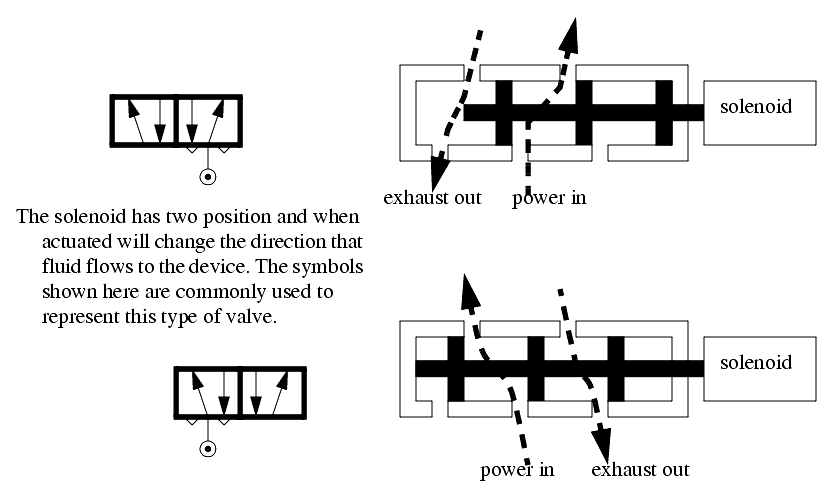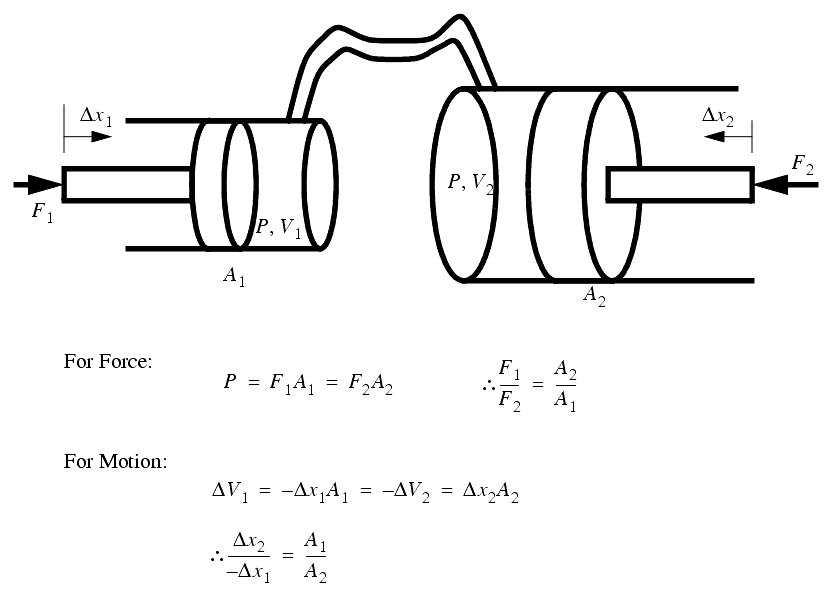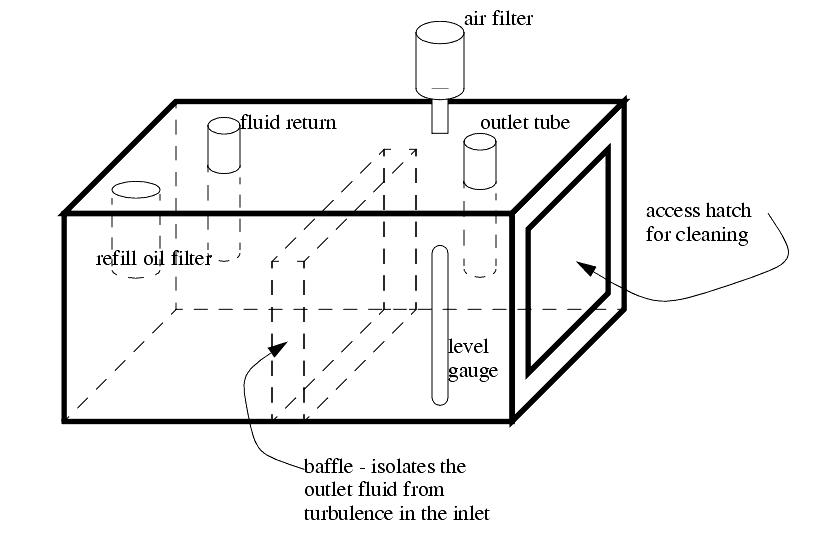
|
|
|
15.2 TYPES
������������15.2.1 Solenoids
������������These use a coil of wire to attract a ferrous core when actuated. When the coil is deenergized a spring will pull the core back out of the coil.

These are particularly bad electrically. There is a large actuation current and when deenergized there will be a large inductive spike.
A very popular application for solenoids is valves. These effectively use the solenoid to drive pistons that open/close ports on a cylinder.

15.2.2 Hydraulic
������������Very powerful and well suited to slower speeds with higher forces.
Use of fluids, and high pressures can make this method awkward, messy, and noisy when improperly applied.
Becoming less common in smaller force applications, as electrical systems mature
Typical hydraulic systems use a simple solenoid valve to actuate devices, some newer developments use more sensitive devices
A hydraulic actuation system is shown below
Higher maximum accelerations that D.C. motors
small time constants giving smooth operation
time constant of hydraulic servo valve is about 5ms
rotary motions with gearing are most common
15.2.3 Hydraulics
������������Incompressible fluids are used to transmit volume and pressure changes throughout a system.
Pascal's law basically describes these systems,

Hydrostatic force/motion multiplier,

The Hydrodynamic Effect - when fluid is moving quickly, it has high levels of kinetic energy. If the fluid impacts a surface, it transmits a high quantity of energy in a short period of time.
Hydraulic Circuits typically contain,

15.2.4 Electric
������������15.2.5 Pneumatic
������������good for limited position robots, it is not suited to partial actuation, either on or off.
Some basic characteristics are,
- additional equipment is required for a pressurized air supply- linear and rotatory actuators are available.
15.2.6 Others
������������
Search for More: |

Custom Search
|

|